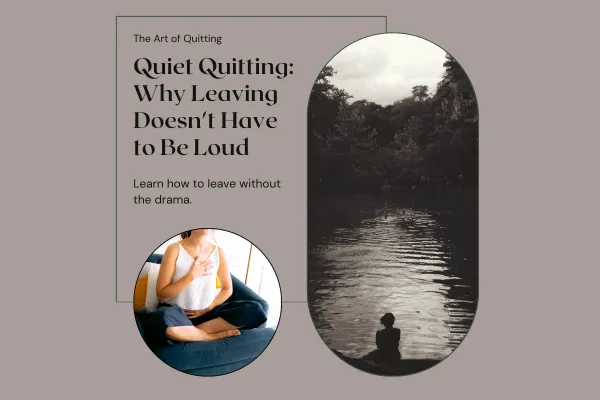See Our Latest Blogs
Lorem ipsum dolor sit amet, consectetur adipiscing elit. Integer ex dui, pellentesque sit amet mi et

The Silent Crisis: How 'Quiet Quitting' is Impacting the Modern Workplace
In recent times, a new phenomenon has been silently creeping into the workplace, and its effects are beginning to surface. Termed as "Quiet Quitting," this trend is causing disruptions, not only in employees' careers but also in the dynamics of modern workplaces.
Understanding Quiet Quitting
Quiet Quitting, or QQ, is the practice of exerting the bare minimum effort required to stay under the radar and avoid being fired. It's a response to various workplace challenges, including increased workloads, insufficient recognition, and the pursuit of better opportunities in the job market. While some argue that QQ is a means for employees to regain control over their lives and protect their well-being, its long-term consequences are starting to raise concerns.
As a holistic wellness and high-performance coach, I've delved into the world of QQ to uncover its impact on individuals and the organizations they work for. It's crucial to assess whether QQ is genuinely a viable solution or if there are better alternatives to combat the issues faced in today's workplaces.
The Hidden Costs of Quiet Quitting
The allure of QQ is apparent, especially when the daily grind becomes overwhelming. However, consider this: in a 24-hour day, you spend a significant portion at work. A typical workday takes up nearly half of your active hours. Imagine going through nearly 47% of your day disengaged, simply coasting by, and doing the bare minimum. Can you expect to be vibrant, energetic, and happy outside of those office walls? The answer is clear – you can't.
Initially, QQ might seem like a breath of fresh air, a way to cope with the pressures of modern work. But over time, it often leads to misery. Humans thrive on challenges, collaboration, and a sense of purpose. We are inherently social beings, and when we disengage from our daily roles, it triggers a cascade of negative effects, leading to cynicism and unfulfillment.
Moreover, transitioning to a new job with a different employer doesn't necessarily guarantee an escape from the cycle of disengagement. Employers actively seek enthusiastic and engaged candidates who bring positive energy to the workplace. Being disengaged in your current role can create an adverse impression that follows you into your next job search.
The Way Forward
So, what should you do if you've found yourself in the QQ trap? The solution lies in finding ways to re-engage with your work. It might involve identifying your current skill set and understanding which skills you need to develop to become a valuable asset in your field. Seek opportunities within your current role to acquire and refine these skills.
In the face of QQ, it's essential to remember that disengaging from your job isn't a long-term solution. Instead, it's a temporary escape that often leads to deeper dissatisfaction. To truly find fulfillment and thrive in your career, you must re-engage with your work and your goals.
If you're ready to break free from the cycle of burnout and find the path to thriving in all aspects of your life without quitting your job, I invite you to join my weekly workshop, "Ditch The Burnout Without Quitting Your Job." In this workshop, I share the three essential requirements to overcome and prevent burnout.
It's time to regain control of your career, your well-being, and your life. Click the link to register and take the first step toward a more vibrant and fulfilling future.
In a world where burnout is prevalent, there's a better way to navigate your career. Let's work together to ensure that you're not just surviving the day but thriving in all aspects of your life. See you soon.
https://www.livingonestepatatime.com/burnouttraining




Get In Touch
Email: [email protected]
Address
Office: Lusby, MD
Assistance Hours
Mon – Fri 9:00am – 5:00pm
Sat – Sun CLOSED

© 2025 Living One Step At A Time, LLC - All Rights Reserved,



